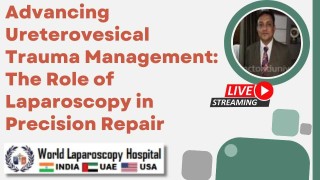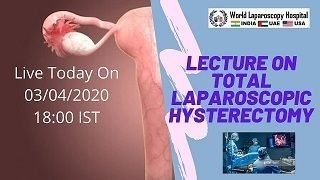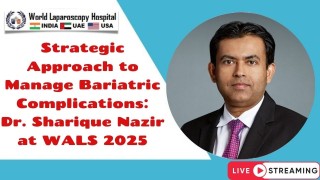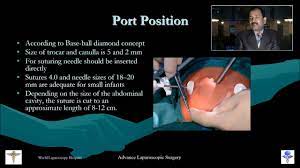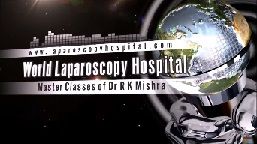Illuminating Laparoscopic Sleeve Gastrectomy for Optimal Surgical Precision
Add to
Share
1,262 views
Report
2 years ago
Description
Introduction: Laparoscopic sleeve gastrectomy (LSG) has emerged as a popular and effective surgical procedure for weight loss in individuals with obesity. Over the years, advancements in medical technology have revolutionized the field of laparoscopic surgery, allowing for increased precision and improved outcomes. One such innovation is the integration of fluorescence angiography during LSG, which provides surgeons with real-time visualization of blood flow and tissue perfusion. This essay explores the significance of fluorescence angiography in laparoscopic sleeve gastrectomy and how it enhances surgical precision, ultimately leading to better patient outcomes. Body: Understanding Laparoscopic Sleeve Gastrectomy: Laparoscopic sleeve gastrectomy involves the removal of a large portion of the stomach, resulting in a reduced stomach size and altered hormone production, which helps individuals achieve weight loss. This minimally invasive procedure offers advantages such as shorter hospital stays, reduced post-operative pain, and faster recovery compared to traditional open surgeries. However, achieving optimal results relies heavily on surgical precision, which is where fluorescence angiography comes into play. The Role of Fluorescence Angiography: Fluorescence angiography involves the injection of a fluorescent dye into the bloodstream, which illuminates blood vessels and allows for real-time visualization during surgery. In laparoscopic sleeve gastrectomy, this technique enables surgeons to assess tissue perfusion and blood flow, helping them make critical decisions regarding the removal of excess stomach tissue. By identifying areas with compromised blood supply, surgeons can modify their approach, ensuring an optimal outcome and reducing the risk of complications. Enhanced Surgical Precision and Safety: Fluorescence angiography empowers surgeons by providing them with a detailed map of blood flow, enabling them to navigate with enhanced precision during the LSG procedure. This real-time visualization helps identify potential ischemic areas, which could be at risk of insufficient blood supply post-surgery. Surgeons can make informed decisions regarding tissue removal, ensuring that an adequate blood supply is maintained to prevent complications such as leaks or strictures. By minimizing the risk of post-operative complications, fluorescence angiography enhances patient safety and improves surgical outcomes. Improved Assessment of Anastomotic Perfusion: During LSG, the creation of an anastomosis, the surgical connection between the remaining stomach and the small intestine, is a crucial step. With fluorescence angiography, surgeons can assess the perfusion of the anastomotic site in real-time. This evaluation helps ensure optimal blood flow to the newly formed connection, reducing the risk of anastomotic leaks or strictures. The ability to confirm adequate tissue perfusion during the procedure significantly enhances surgical decision-making and patient safety. Future Directions and Advancements: Fluorescence angiography represents a remarkable advancement in laparoscopic sleeve gastrectomy. As technology continues to evolve, improvements in dye sensitivity, imaging systems, and surgical instruments hold the potential to further refine the application of fluorescence angiography. This may include real-time quantitative analysis of blood flow, intraoperative assessment of tissue viability, and personalized surgical approaches based on individual patient anatomy. These advancements will continue to shape the future of laparoscopic sleeve gastrectomy, elevating the standard of care and enhancing patient outcomes. Fluorescence angiography has emerged as a groundbreaking technique in the field of laparoscopic sleeve gastrectomy (LSG), a minimally invasive surgical procedure for weight loss. This innovative approach involves the injection of a fluorescent dye into the bloodstream, allowing surgeons to visualize real-time blood flow and tissue perfusion during the surgery. By shedding light on the intricate vascular network, fluorescence angiography enhances surgical precision and improves patient outcomes. During LSG, surgeons remove a significant portion of the stomach to reduce its size and aid in weight loss. However, the success of the procedure relies heavily on surgical accuracy and the preservation of adequate blood supply to vital tissues. Fluorescence angiography provides surgeons with a dynamic visual representation of blood flow, enabling them to identify compromised areas that may be at risk of insufficient perfusion. This information guides surgical decision-making, allowing for precise tissue removal while minimizing the potential for complications. By assessing anastomotic perfusion, the technique ensures optimal blood flow to the newly formed connection between the remaining stomach and the small intestine. Real-time visualization of perfusion at the anastomotic site reduces the likelihood of post-operative complications such as leaks or strictures, enhancing patient safety and improving long-term outcomes. The integration of fluorescence angiography in laparoscopic sleeve gastrectomy represents a significant advancement in the field of bariatric surgery. This cutting-edge technology provides surgeons with invaluable insights, allowing for immediate adjustments and ensuring the preservation of healthy tissue and blood supply. As the technique continues to evolve, further refinements and advancements are expected, offering the potential for personalized surgical approaches and improved quantification of blood flow. Fluorescence angiography is revolutionizing laparoscopic sleeve gastrectomy, empowering surgeons to optimize surgical precision, enhance patient safety, and minimize post-operative complications. By harnessing the power of real-time visualization, this technique is transforming the landscape of bariatric surgery, ultimately improving the lives of individuals seeking long-term weight loss and improved health. Conclusion: Fluorescence angiography has emerged as a transformative tool in laparoscopic sleeve gastrectomy, providing surgeons with invaluable real-time visualization of blood flow and tissue perfusion. By enhancing surgical precision and safety, fluorescence angiography contributes to improved patient outcomes and reduced post-operative complications. As this technology advances, it holds the potential to further refine the procedure and revolutionize the field of bariatric surgery, offering hope and improved quality of life to individuals struggling with obesity.
Similar Videos

